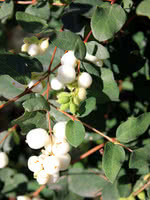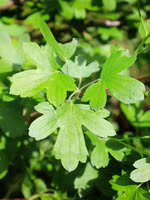Mon-Fri 9am - 5pm Mountain time
Common Snowberry vs Golden Currant
Symphoricarpos albus
Ribes aureum
SOLD OUT
Common Snowberry is a small deciduous shrub with characteristic white to pink flowers and clusters of white fruit.
This North American native species is very adaptable, and can be used for erosion control in riparian and restoration areas. Snowberry's fruit attracts wildlife, and livestock can consume the berries without issue.
Golden Currant produces berries for jams, jellies, sauces and even pemmican. This currant bush is very dense, allowing for use as a hedge, windbreak, or wildlife habitat.
This plant is also a very popular rootstock to graft popular red and white currant varieties to. The resulting plants are taller, more productive, and easier to harvest.
Common Snowberry Quick Facts
Golden Currant Quick Facts
Toxicity: berries toxic to humans

